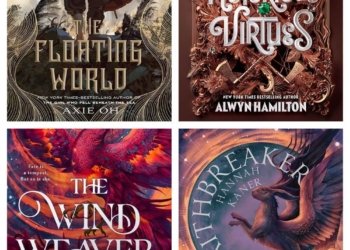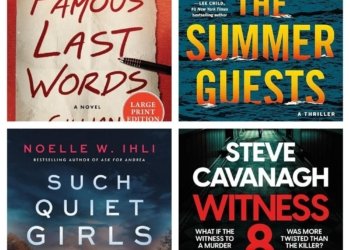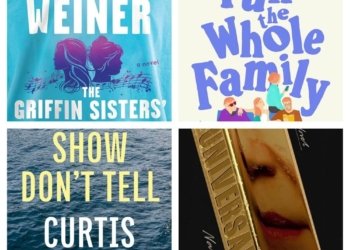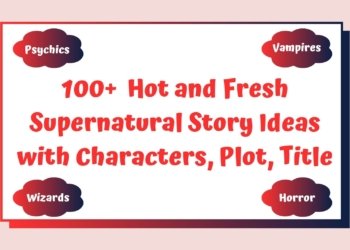No products in the cart.
A Conversation with Nina Schuyler, a Short Stories Author
Nina Schuyler is the author of In This Ravishing World, teaches creative writing at Stanford Continuing Studies, The Writing Salon, and for the independent bookstore, Book Passage.
96
SHARES1.3k
VIEWSNina Schuyler teaches creative writing at Stanford Continuing Studies, The Writing Salon, and for the independent bookstore, Book Passage. She writes a column about prose style for Fiction Advocate and reviews books for The Millions. She graduated from Stanford University with a B.A. in Economics with Honors, UC Law San Francisco, where she earned a J.D., and San Francisco State University, where she earned an MFA. She lives in Northern California with her husband and two sons, where she hikes, bodysurfs, and writes in a small room, looking out at a tall palm tree.
Her short story collection, In this Ravishing World, won the W.S. Porter Prize for Short Story Collections and The Prism Prize for Climate Literature, will be published by Regal House Publishing in 2024. Her novel, Afterword, was named a Notable 100 Book in the 2023 Shelf Unbound Best Indie Book Competition. Her novel, The Translator, won the Next Generation Indie Book Award for General Fiction and was a finalist for the William Saroyan International Writing Prize. Her novel, The Painting, was a finalist for the Northern California Book Award. Her book, How to Write Stunning Sentences, was a Small Press Distribution bestseller, and her new craft book, Stunning Sentences: The Creative Writing Journal with 80 New Prompts from Beloved Authors to Improve Your Style, was published by Fiction Advocate in November 2022.
Let’s get started with a quick rapid fire.
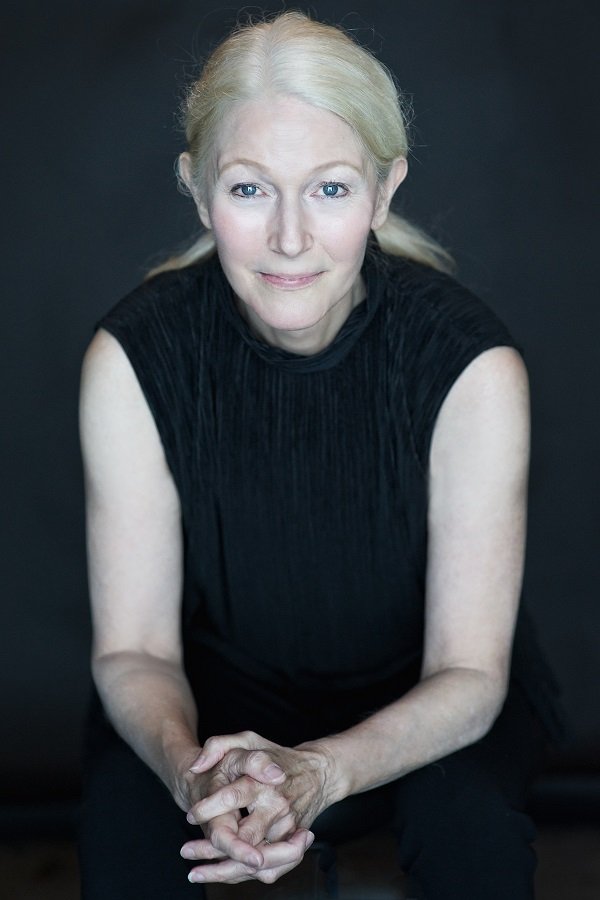
Q1. If you could be transformed into one mythological creature, which one would you choose?
Amphitrite, a spark-plug goddess of the sea who is often serenaded by delicate sea horses.
Q2. What time do you usually go to bed at night?
There is no going to bed. I never leave the bed. I write, eat, read, converse in bed. I am the bed.
Q3. What are the least-likely three words someone would use to describe you?
Blue, square-headed, furry.
Q4. Where did you go on your last vacation?
Vacation? Unfortunately, there has not been a vacation for a long time. That word is covered in lint. These are impossible times.
Q5. Would you rather find your dream job or win the lottery? You can’t do both.
Money is for sissies. Give me the big dream. Let the dream take on contour and heft.
Q6. What is one thing you regret spending money on?
Sea monkeys. (What are sea monkeys? And why do my children want them?)
Q7. What object do you misplace or lose the most?
My right foot. I often leave it in my shoe. My mother had this problem.
Q8. If you were a spy, what would be your codename?
Mountain on the Horizon is Weeping. There are not shortcuts, no abbreviations. The codename must be spoken in its entirety.
Q9. What secret about the universe would you most want to learn?
Why does the human brain look like a gigantic walnut? Why??? Nearly eight billion people on the planet, desires flinging everywhere.Nina Schuyler, In This Ravishing World
Q10. What never fails to make you laugh?
Talking dogs. Our neighbor has five of them and the things his dogs say!
Q11. What was one “before” and “after” in your life?
Nail clippers. They changed my life.
Q12. What do you think people misunderstand about you?
My dainty earlobes. They think they’re a sign. A sign of what? I don’t know. But I’ve been told they’re a sign.
It’s time for a more detailed conversation, Nina.
You’ve answered our rapid fire so well, Nina. Now, it’s time for our readers to know more about the person behind the book.
Q. Tell us about your journey.
There have been many journeys (soul/heart/body/mind), but let me talk about the writing journey, which has been beautifully chaotic, circuitous, and full of unexpected and stunningly alive terrain. I traveled through careers in finance, law, and journalism. But underneath these labels, I was watching, thinking, reflecting, reading, and writing in a small notebook; beneath the labels of lawyer or financier, I was falling in mad, obsessive love with words, sentences, and stories. Stories are meaning-making machines, cracking open the mind and heart and letting the great world in. My god, I wanted to learn how to do that. After work, after long hours of writing legal news stories, I went to a night class, Beginning Fiction. For months, I went, and that led to an MFA in creative writing, upon which my thesis, The Painting, became my first published novel. From there, I changed my label to Professor of Creative Writing and got to live, breathe, talk, and eat stories. Two more novels, The Translator and Afterword, emerged, and now a collection, In This Ravishing World.
Q. So, what books have you read more than once in your life?
Virginia Woolf lights up my creative coal and my human soul. When I lose faith, I turn to her. She elevates me, I levitate. Her rhythms reset my inner beats and my pulse becomes musical, and all of this to say, I’ve read many times Mrs. Dalloway, and To the Lighthouse, many, many times.
Q. Interesting. Who has been the biggest supporter of your writing?
My husband. What a beautiful man. He’ll say things like, Go write, I’ll take the kids. I’ll make dinner, you go write. I’ll pick him (young son) up from basketball-soccer-volleyball-swimming-friend’s house-school, you finish whatever you’re writing. He reads everything I write, sometimes catches typos or grammatical errors, and always says, I love it! It’s so good! He’s not the best reader or critic, which is fine. Like I said, a beautiful man.
Q. Do you hide any secrets in your books that only a few people will find?
Memory and imagination are lovers. They’re in deep conversation at all times, with memory whispering to the imagination the most incredible things, things I’ve forgotten. But my three sisters haven’t forgotten, and they find them in my writing, camouflaged with the cloak of a character by a different name, a different profession or attitude. Hey, on page XXX, that character who snuck out the window at 3:00 am into the arms of her boyfriend waiting on the sidewalk? That was me when I was 16! It’s futile to deny it. It’s become a game for them: spot the incident from our childhood, our family, a snippet of an ordinary event that somehow becomes extraordinary when you write about it. Every situation, every person has a melody playing, even if you can’t hear it.Nina Schuyler, The Translator
Q. Now comes the most anticipated question that every author must answer. How do you process and deal with negative book reviews?
Like an arrow to the vulnerable part of the body, which is probably the heart, but could be the armpit. I try to avoid the bad reviews by not reading them, but sometimes they slip through the double-brick wall. Then comes the arrow. It takes several days for the pain to fade, and even after that, for a while, it feels like a second pulse. Soon, that, too, fades, but it takes so dang long.
Q. What comes first for you — the plot or the characters — and why?
Neither plot nor character. What comes is usually an idea. I love ideas. They shimmer and tremble and I become their slave. How can I render this idea, transforming it into characters with motivations and desires and conflicts?
Q. How do you develop your plot and characters?
Through my imagination, I slip into the skin—as much as possible—of my characters and, enveloped, enmeshed (as much as possible), I step into the external world (i.e., the setting), feeling the texture of the world through the characters’ history, desires, dislikes, fears, pleasures. Plot, which I define as the external world imposing itself on the character (as it does to us), begins to work its troubling magic the minute one of my characters steps out the door.
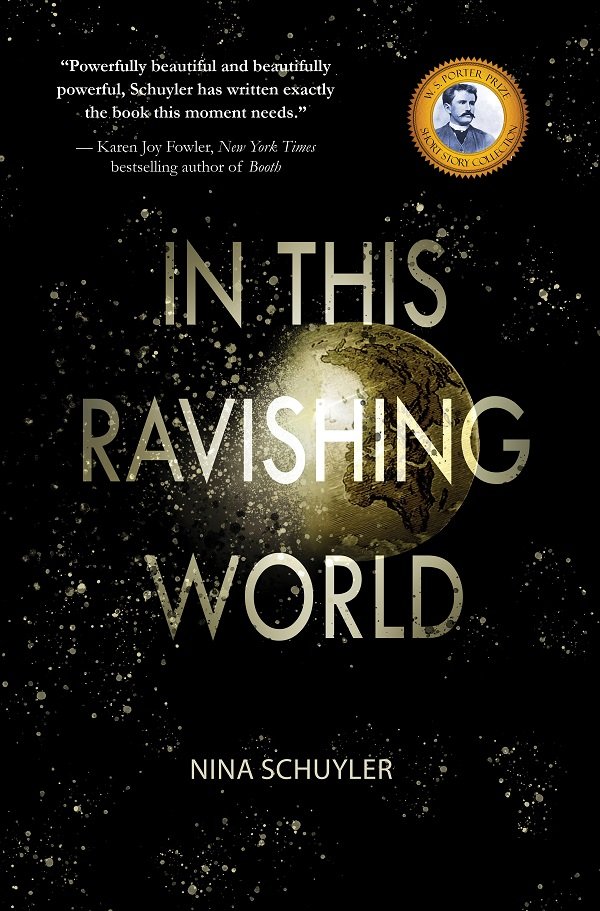
Q. So, now, about your book. Talk to us about it. No major spoilers.
In This Ravishing World won the Prism Prize for Climate Literature and the W.S. Porter Prize for Short Story Collection. Nine interconnected stories unfold, bringing together an unforgettable cast of dreamers, escapists, activists, and artists, creating a kaleidoscopic view of the climate crisis. An older woman who has spent her entire life fighting for the planet sinks into despair. A young boy is determined to bring the natural world to his bleak urban reality. A scientist working to solve the plastic problem grapples with whether to have a child. A ballet dancer tries to inhabit the consciousness of a rat. More and more characters fill these pages. It’s a full-throated chorus, with Nature joining in, marveling at the exquisite beauty of our world, and pleading, raging, and ultimately urging everyone toward activism and resistance.
Q. What part of the book did you enjoy the most while writing?
Each story was a love fest, but I particularly enjoyed inhabiting the consciousness of Eleanor, a 70-year-old environmental economist who tried to convince companies to stop polluting or, at the very least, internalize their externalized costs. Her entire life was spent avoiding where we are now. At a reading the other day, someone said they appreciated that I included an older woman as an intelligent character who possesses agency and is fascinating. I thanked her, but I was also appalled. This is where we’re at as a society. To include such a female character garners high praise. Society turns its back on older women, writing them off, turning them invisible, but I love them, their wisdom, their experiences, and all they’ve been through as females, carving out a life. How they’ve juggled all the demands: to be slender, pretty, efficient, mothering, capable, not too loud, not too soft, not too ambitious, kind, but not a pushover, competent, but quietly. In my collection, Eleanor remembers telling her daughter, “As a woman, you’ve got to be the most level-headed, reasonable person in the room, or they’ll discount you. No tears, no hysteria, no heightened emotion, no screeching, or they won’t hear a word you say.”
Q. What is your kryptonite as a writer?
A badly written sentence—one that has not reached its potential. The possibilities for a sentence are endless and circumscribed by the context. Fortunately, this kryptonite has a silver lining: the bad sentence hurls me into revision, and because I am obsessive, I don’t stop revising until my ear is pleased with the sentence. Not every sentence exerts this kind of damaging pressure, but many do.
Q. Would you and your main character get along in real life?
Fortunately, in my short story collection, I have a buffet of main characters, all of whom I’d get along with well. They are, after all, refractions of my inner world. The yoke between the writer and the characters is the writer’s emotional landscape/memory bank. I love Ed, a gay ballet dancer, and though I’ve never been a gay man, I have been a ballet dancer, and I have experienced unrequited love and lust and immense swooning for another. Or Lucinda, who spends her free time at the shelter, helping abandoned dogs; and I, too, have gone through periods where I prefer the company of animals to humans.
Q. What is your writing process like? Are you more of a plotter or a pantser?
I have a sense of a blueprint for the shape of the story. A sense of the beginning and a faint, ghostly feeling for the ending. The idea—and for In This Ravishing World, it was the climate crisis and characters in a mad whirl of human desire and motivation—provides the contours of this shape. You can only speak from the circumstances you currently find yourself in; change the circumstances and you might have an entirely different view of things.Nina Schuyler, The Translator
Q. Let’s talk about the process of writing. Do you do research while writing a book to add more authenticity? What kind of research?
Realism literature requires the story to mirror the known world, a world recognizable to the reader. So far, all my novels and this collection have been grounded in realism, so research is utterly necessary when I step beyond my experience and knowledge. Ava, one of the characters in my collection, is a scientist working with bacteria to solve the plastic problem. I am a storyteller, not a scientist, so to make Ava part of a realistic world, I researched how scientists have discovered that some bacteria eat plastic. They’re also trying to figure out how to make it eat faster. These details are woven into Ava’s story.
During my years as a journalist, I developed the chutzpah to pick up the phone and call if I didn’t understand something. Jake, another character in the collection, worked on the painting crew of the Golden Gate Bridge. The Golden Gate Bridge Highway and Transportation District has a wonderful website and employees who love to talk about the beautiful bridge.
Q. What was your hardest scene to write?
I anthropomorphized nature, meaning I gave Nature a voice and literal human traits and behaviors. Nature is threaded throughout the collection. I wrote many many pages, trying to hear Nature’s voice. At first, it was so angry. Humans have done such damage; the data is staggering, heartbreaking, and excruciating. Weeks of Nature spewing, but then I remembered Nature wants humans to listen, and yelling at someone rarely works. I tried again, but someone in my writer’s group said it was too poetic; it read like nature poetry. I tried again, remembering Nature has a very different sense of time and temporal vision. It’s been around for billions of years and knows far more than we do. We are a blip in Deep Time. I ultimately excavated a voice (I hope) with a full spectrum of emotion: Nature pleads, rages, luxuriates in beauty, in joy, struggles to understand humans, on and on. Nature has empathy for all the human characters because Nature, too, has experienced similar emotions and understands suffering.
Q. Well, this has been great. Now, before we wrap this up, do you have any suggestions to help someone become a better writer? If so, what are they?
First, I want to say welcome, fellow creator. All that sensitivity and paying attention to the world pours right into your writing. It is, similar to anything you want to master, a practice. But here, it differs from, say, the pursuit of reaching the top of the corporate ladder. Writing is both play and rigor. Play play play–try things out on the page, unleash your imagination and climb over perceived barriers, such as: I’ve never seen this before, can I do it? This goes against the rules, can I write it? Yes and yes. You have to try to find out. The rigor is the discipline. Listen to that dream: I want to be a writer. Which means you have to write. A writer is someone who writes. Read voraciously good literature. Read closely, so close you can smell the page and everything emanating from it. All of what you read will flow into your being. Learn to revise and revise is a re-imagining. This takes time because you have to step away from what you’ve created so the shape of the story floats around in your brain. Try sculpting that shape a different way. What if you moved the middle to the beginning? What if you changed the ending? What if you took away that third character? Really, it’s more play.
Related Posts
10 Most Anticipated Fantasy Books of Spring 2025
As the seasons change and we step into the vibrant energy of spring 2025, readers everywhere are eagerly anticipating fresh...
10 Most Anticipated Thriller Books of Spring 2025
Are you a bookworm who thrives on heart-pounding suspense and unexpected twists? Get ready to mark your calendars and clear...
8 Most Anticipated Contemporary Books of Spring 2025
Are you a bookworm always on the lookout for the next big literary gem to dive into? Well, get ready...
100+ Supernatural Story Ideas to Unleash Your Inner Author
Are you ready to pen the next great supernatural novel? The supernatural genre has always captured our imaginations. It explores...
About Us

Trenzle
Where Trends are made and discovered
Trenzle is your official source of discovering the latest people, work, and ideas that deserve to trend. Discover Authors and their books, Creators and their work, People and their opinions, and Stories from around the globe.
Learn more
Latest Posts
10 Most Anticipated Fantasy Books of Spring 2025
April 18, 2025
Trenzle Top 10 Trending Free Book Deals for April 17, 2025
April 17, 2025
Categories
© 2023 Trenzle - Online Author News & Magazine




